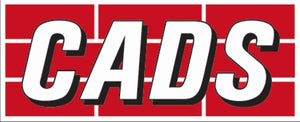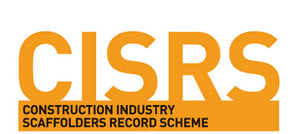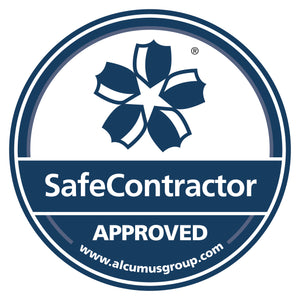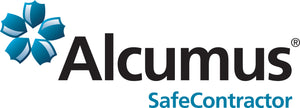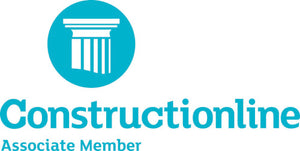13 July, 2023
Whether you want to become a scaffolder or are planning to erect scaffolding as part of your construction job or for a DIY building project, it is imperative that you know which scaffolding supplies you will need to put together scaffolding safely and efficiently, as well as what part each piece of equipment plays to ensure this.
This blog will act as your ultimate guide to scaffolding supplies, as we’ll tell you all you need to know about what creates a sturdy scaffolding structure - including both the essentials and the useful accessories to have. Read on below to learn all about scaffolding supplies.
What is Scaffolding and When is it Needed?
By definition, scaffolding is ‘a structure of metal poles and wooden boards put against a building for workers to stand on when they want to reach the higher parts of the building’ (according to the Cambridge Dictionary). Essentially, it is a temporary structure that is erected around or against all or part of a building, bridge or other man-made structure, acting as a support for construction workers and their equipment and materials during the process of building, maintaining or repairing the structure in question.
Scaffolding is essential for offering workers both accessibility and safety (assuming it has been put together properly), with the platforms providing a place for them to stand and walk across in order to complete work at height, while the poles also act as secure attachment points for their safety gear to be connected to (i.e. fall arrestors).
During the construction of a new building, scaffolding is typically required towards the start of the build, as it allows workers to construct the necessary foundations of the structure before the floors of different levels are put into place and can be stood on whilst continuing the work. In terms of height requirements, it is recommended that scaffolding is used at four feet from a lower level, though the minimum requirement is at least six feet and, of course, for anything higher than this.
It is important that scaffolding is constructed properly and uses all the necessary supplies to ensure that it is safe and stable for workers to be upon. Below, we go into more detail on what said supplies include and what purpose they have in the overall scaffolding structure.
Scaffolding Supplies: from Scaffold Tubes to Steel Acrow Props
Scaffold Tubes
Scaffold tubes are essential when building a scaffolding structure. As the name suggests, these metal sections of pipe act as tubes that are used vertically to create the support system of the scaffolding for the boards to then be securely placed at different heights. These tubes are often made in different lengths, so that the height of the scaffolding can be customised depending on the job at hand regarding how many levels there are and how much height is required.
Typically, these tubes are made from aluminium or galvanised steel. Aluminium is a medium strength alloy with excellent corrosion resistance, this makes aluminium tubes ideal for prolonged outdoor use especially for smaller projects that only require a light amount of scaffolding.
As for galvanised steel, this is incredibly strong and can bear more weight over a long period of time, making galvanised tubes ideal to use for longer, more extensive projects whereby lots of scaffolding is required. Furthermore, although steel is naturally corrosive and prone to rust, the zinc coating of galvanised steel makes it resistant to both moisture and rust, which protects it from harsh weather conditions and allows it to be used outside.
There are three types of scaffold tubes that are generally used, these being standards, ledger and transoms.
Standards
Standards are the vertical tubes that give the structure height and act as support for the entire structure.
Ledgers
Opposite to standards, ledgers are scaffold tubes that are placed horizontally between the standards, creating the perimeter of the scaffolding structure. These offer more stability and provide lateral support.
Transoms
Transoms, like ledgers, are placed horizontally, though these are used perpendicular between the ledgers. Not only do these provide further stability, but they act as a surface upon which boards can be laid to create the platforms for workers to stand on.
Trestles
More often used for smaller working platforms, rather than normal scaffolding, a trestle is a type of framework consisting of a horizontal beam that is supported by two pairs of sloping legs. These are used in pairs in order to support and bear the weight of a flat surface.
As we mentioned, building trestles are smaller structures than generic scaffolding and are most commonly used by builders, plasterers and decorators who carry out indoor decorating jobs, bricklaying and finishing jobs. This is because, though available in different sizes, they are limited in height and act as a single platform rather than a multi-tiered one.
These platforms are relatively lightweight, making them easy to assemble and a convenient choice for quick and low level jobs, whilst the sloping legs and stands of the trestles still ensure that they are sturdy and stable enough to safely bear weight.
Acrow Props
When working with a large scaffolding structure that features platforms with large surface areas, then these may need to be reinforced underneath to prevent them from collapsing when working on and/or underneath them. Essentially, they need propping up, which is where acrow props come in.
Acrow props are temporary vertical supports that are very similar in appearance to scaffold poles, however they feature a flat plate on either end along with a threaded collar and handle attachment in the middle area of the prop, which allows you to adjust it to the necessary height between the floor and whatever surface it will be supporting.
Most, if not all, acrow props are made from galvanised steel, meaning they benefit from both the strength and weather resistance that makes them ideal to use for supporting outdoor scaffolding. They also come in different sizes, since they can be used in such a range of different situations, with these being:
- Size 0 (1.1m up to 1.8m)
- Size 1 (1.75m up to 3.12m)
- Size 2 (2.4m up to 3.4m)
- Size 3 ( 2.4m up to 4m)
- Size 4 (3.2m up to 4.9m)
All these sizes are recognised as British Standard (BS) sizes and must be manufactured to BS4074 standards.
Though predominantly used as vertical supports, there are also other variations available. For example, some come with an adjustable base-plate that can be set to angle in order to provide horizontal support to walls and framework.
Boards
In order to facilitate safe working conditions when at height, timber scaffold boards are used along scaffolding structures to provide stable platforms for workers to stand on and move across, so that they can carry out work safely.
When used in scaffolding, these boards are banded on each end with metal strips in order to provide extra protection to the timber, thus decreasing wear and tear and stopping them from splitting - especially when exposed to damp or wet conditions.
So that they are not wasted after their initial use, it is now popular for reclaimed scaffold boards to be sold and reused for alternative purposes, such as for decking, flower beds, furniture and more.
Fittings
It’s all very well having all the aforementioned pieces of scaffolding equipment, but they are useless without anything to secure them all together. This is why the correct fittings play just as important a part in scaffolding structures.
Most essentially, different types of couplers are used in order to attach scaffold tubes to one another and to secure scaffold boards to the transoms below. The most commonly used fittings include:
- Double couplers
- Single couplers
- Swivel couplers
- Sleeve couplers
- Board retaining clips (also known as BRC couplers)
In addition to this, base plates are also required to be attached to the lowest level of standard scaffold tubes, so that they can stably rest on the floor and support the rest of the scaffolding above.
Scaffolding Hire
Are you about to undertake a project that requires scaffolding, but don’t have access to your own? Then TJR Scaffolding is the supplier you need. We have a vast range of scaffolding supplies for sale or hire that we guarantee will meet all the requirements you need for your project.
Don’t hesitate to get in touch with us today with any questions regarding the equipment we supply and to obtain your free, no obligation quote!


































